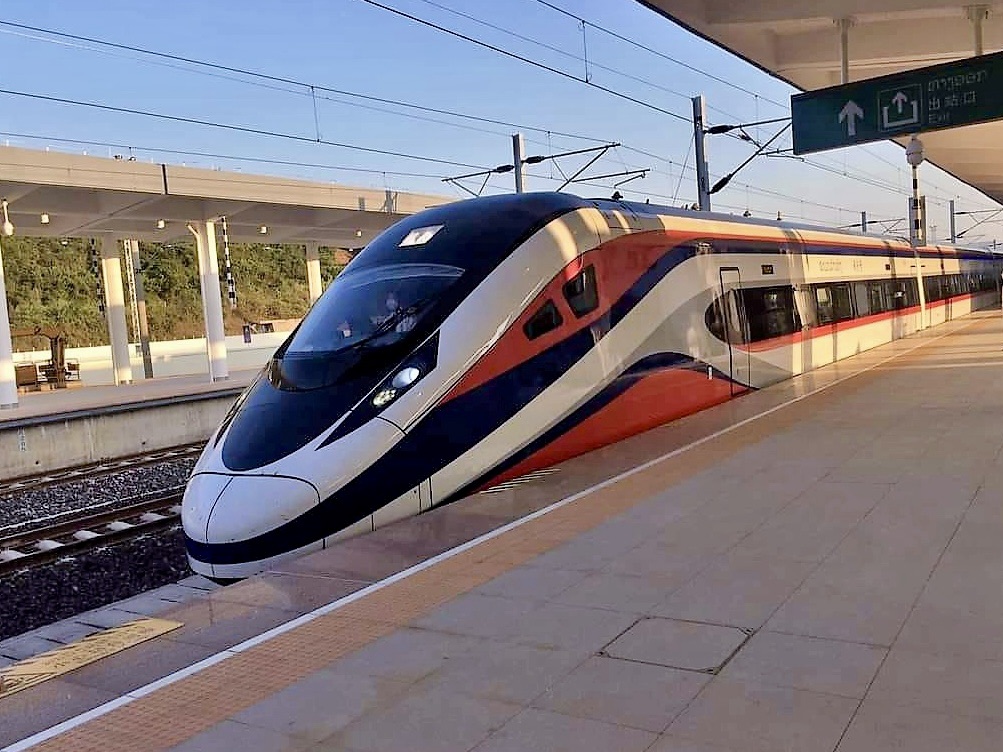The Laos – China Railway

The story starts with a harsh economic fact. Laos now has an almost high speed railway, but as a result owes China over 10 billion US dollars in debt, not that far from its 13 billion dollar GDP. Walking around Vientiane almost wherever I see a Lao flag I see a Chinese one not far away.

Practically you might have heard that the biggest challenge on the Lao China Railway (LCR) is getting a ticket. Matters have improved since opening, but tickets only go on sale 3 days before travel. There are three solutions. (1) get an agent to buy your ticket (2) use the LCR app if you have a Lao or Thai mobile number or (3) buy at the station on arrival from Thailand. I went for the app in the end and it was surprisingly simple once set up with all my details. At 06.30 I was first in and purchased a rare business class ticket, something not offered by the agents and that would be sold out long before I reached a station ticket counter once in Laos.
So three days later and I’m off to the station for my train, the C92 to Luang Prabang, departing at 09.45. The snag is that the new LCR station is a half hour drive out of town and a taxi costs 300000 Kip (£11). You can see it from a couple of miles away. In the Chinese tradition, it dominates the landscape as an international power play.

As long as you don’t have any prohibited items in your luggage it doesn’t take long to get into the station. I’ve had to sacrifice my aerosols, so I’m unshaven but hopefully not too smelly. Inside the huge airy building I find a VIP lounge with a few big white leather chairs and not much else. Everything is clean and well ordered. Twenty minutes before departure a lady arrives to escort business class passengers past the crowds and right onto the platform, a real bonus.

The train is long and business class is coach 8, the final carriage at the rear. A guardess in Lao national dress stands by the final door. When I try to take a photograph of the back end of the train she crosses her arms in front of her body in a sort of pre strike karate move and won’t let me pass. Chinese train management don’t understand rail enthusiasts and assume only a dangerous person would wish to pass the end of the train on the platform. I’ve seen this before in Manchuria. Keen to avoid a fight of Double Dragon proportions (I’m sure I would lose), I board the carriage and find my seat, 1A. If Richard Burton were on board, he’d be sat right here.

The configuration is 1-2 on this train. In the latest version it 1-1, but I’m more than happy with the comfort and space on offer here. I settle in and enjoy a cup of coffee made by my martial arts friend. It only comes in a very Asian – ‘3 in 1’.
The scenery becomes more interesting as we head north and pass between mountain ranges. I can now see this must be a mammoth journey in a mini van. A day to cover the ground by road, but by rail it’s just 2 hours.

The final 30 minutes of the journey is mainly in tunnels as we pass through the mountains. A man in a purple shirt with a purple hat joins the crew in the vestibule at the front of the carriage. I imagine he might be the train manager, or security. He’s armed with a small calibre pistol in a brown holster, probably to take down any smokers or passengers with illegal deodorants.
Our arrival at Luang Prabang is predictably on time, and I realise that the exit is at our end of the platform, putting me in pole position to bag a minivan into town. The only problem is I’m not allowed to leave the station without my ticket and my app doesn’t seem to work at first. But eventually I’m through, down in a lift and negotiating with a driver. It’s 300000 Kip for the van, divided by the number of passengers. I share the journey with a couple of lovely world savvy Americans.
This trip has been effortless once the ticket had been purchased. As for Luang Prabang, it’s paradise. Even the insects are chilled out.
